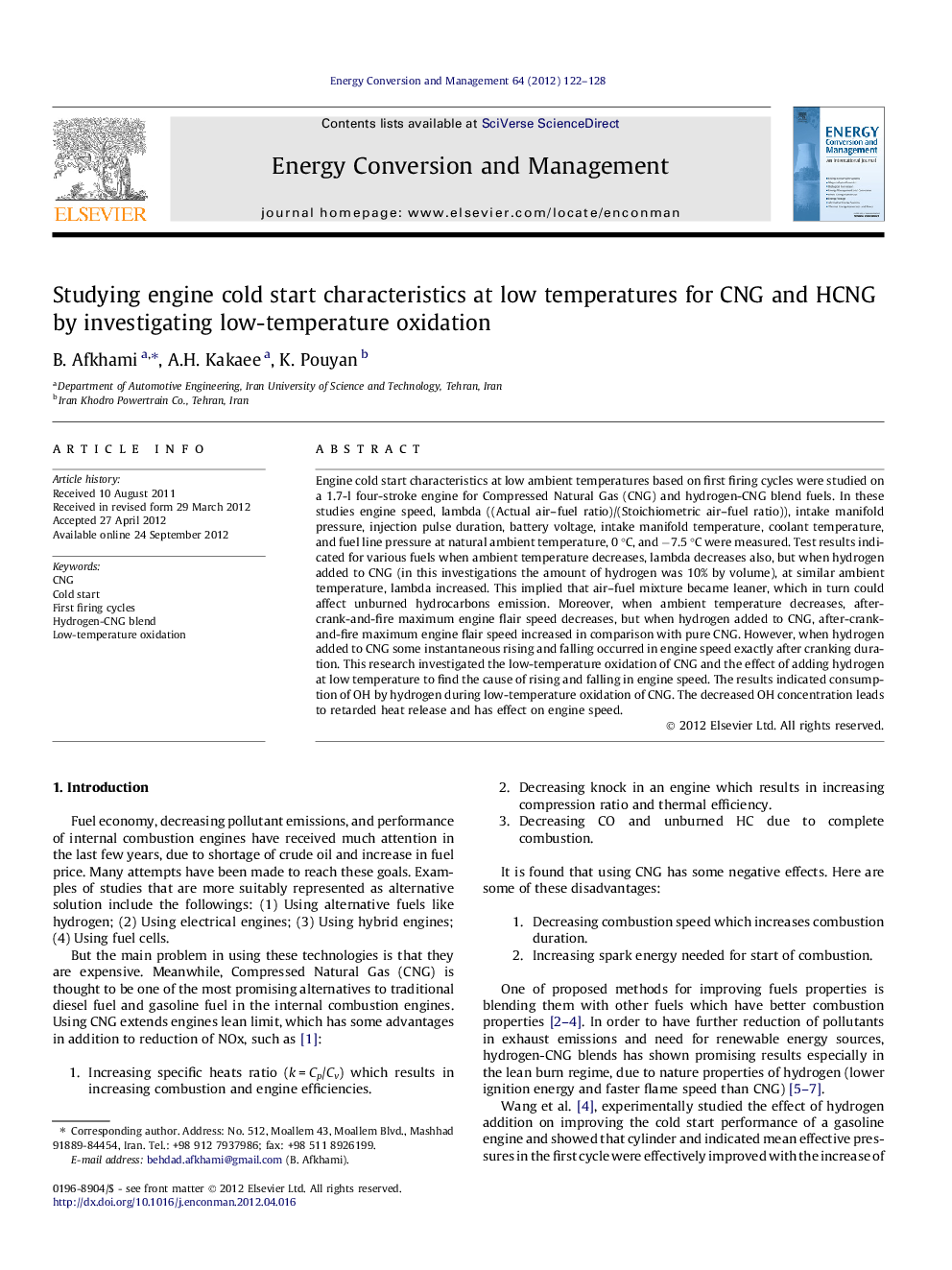| Article ID | Journal | Published Year | Pages | File Type |
|---|---|---|---|---|
| 761113 | Energy Conversion and Management | 2012 | 7 Pages |
Engine cold start characteristics at low ambient temperatures based on first firing cycles were studied on a 1.7-l four-stroke engine for Compressed Natural Gas (CNG) and hydrogen-CNG blend fuels. In these studies engine speed, lambda ((Actual air–fuel ratio)/(Stoichiometric air–fuel ratio)), intake manifold pressure, injection pulse duration, battery voltage, intake manifold temperature, coolant temperature, and fuel line pressure at natural ambient temperature, 0 °C, and −7.5 °C were measured. Test results indicated for various fuels when ambient temperature decreases, lambda decreases also, but when hydrogen added to CNG (in this investigations the amount of hydrogen was 10% by volume), at similar ambient temperature, lambda increased. This implied that air–fuel mixture became leaner, which in turn could affect unburned hydrocarbons emission. Moreover, when ambient temperature decreases, after-crank-and-fire maximum engine flair speed decreases, but when hydrogen added to CNG, after-crank-and-fire maximum engine flair speed increased in comparison with pure CNG. However, when hydrogen added to CNG some instantaneous rising and falling occurred in engine speed exactly after cranking duration. This research investigated the low-temperature oxidation of CNG and the effect of adding hydrogen at low temperature to find the cause of rising and falling in engine speed. The results indicated consumption of OH by hydrogen during low-temperature oxidation of CNG. The decreased OH concentration leads to retarded heat release and has effect on engine speed.
► The effects of adding hydrogen to CNG on engine run-up speed and lambda were investigated. ► For hydrogen-CNG mixture, maximum engine speed increased in comparison with CNG. ► For hydrogen-CNG mixture, lambda increased in comparison with CNG (leaner air–fuel mixture). ► For hydrogen-CNG mixture, some instantaneous rising and falling occurred in run-up speed. ► OH consumption by hydrogen during low-temperature oxidation causes rising and falling.
